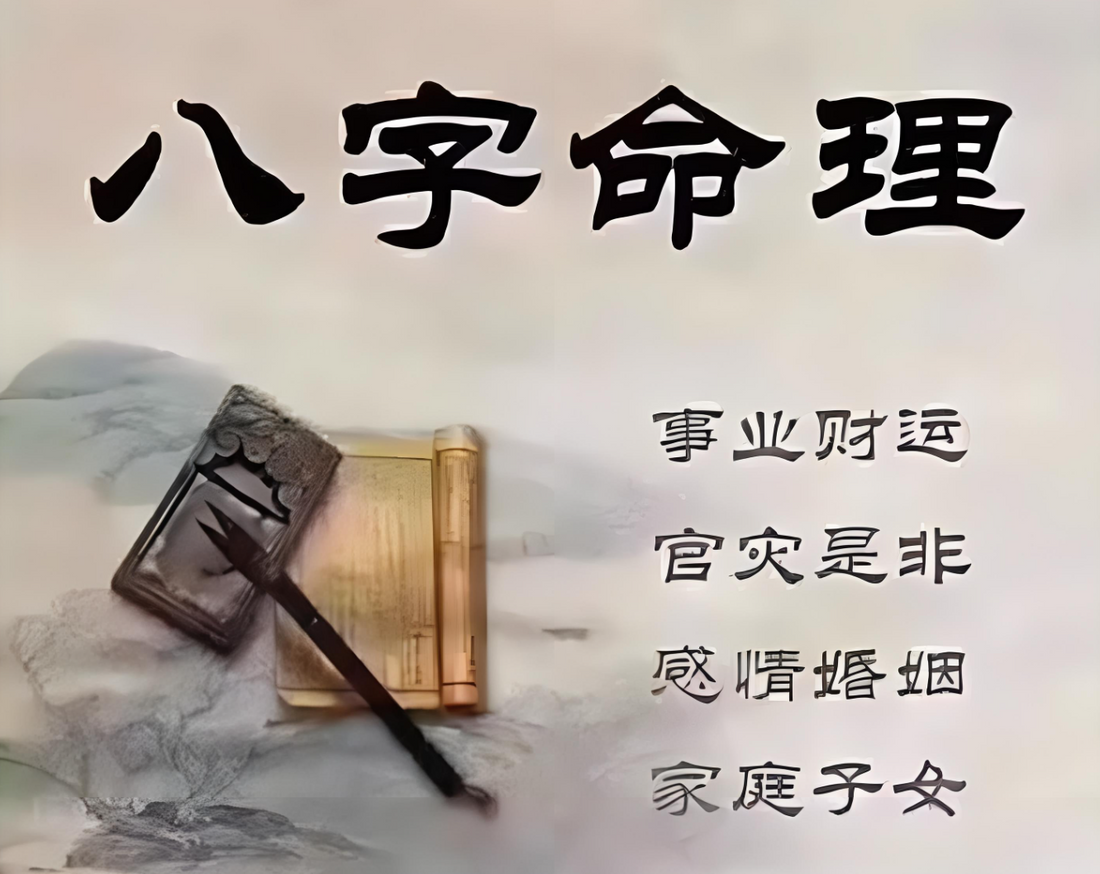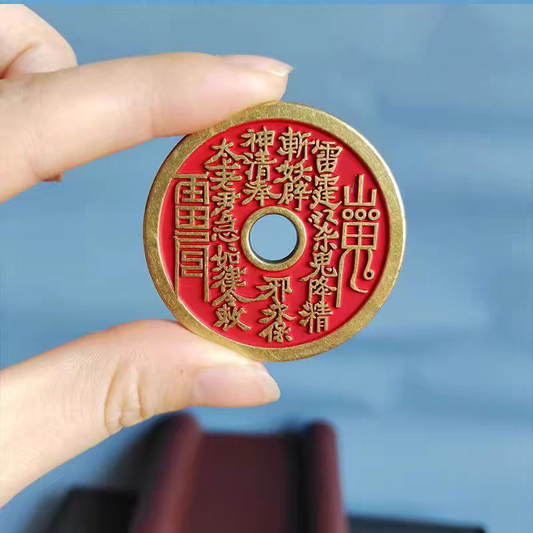
Introduction to Bazi Fortune Telling Part 1
paulpengAktie

The art of fortune-telling based on one's Ba Zi, also known as "Ba Zi Destiny Analysis" or "Four Pillars of Destiny," involves calculating predictions using the individual's birth date and time.
To delve into Ba Zi fortune-telling, one must grasp the basics of the Four Pillars of Destiny. The Ba Zi comprises four pillars based on the Heavenly Stems and Earthly Branches at the time of birth: the Year Pillar (Year Stem and Branch), Month Pillar, Day Pillar, and Hour Pillar, totaling eight characters, hence the term "Four Pillars of Destiny." Ancient astrologers used this method to determine the auspiciousness and adversity of one's fate and prospects.
It's akin to a person's DNA, shaping their life trajectory through the interactions of the Five Elements. Ba Zi Destiny Analysis is a study that uses theories such as the Heavenly Stems and Earthly Branches, Yin-Yang, and Five Elements to predict aspects of a person's life, including career, marriage, finances, academics, and health. One limitation is that it cannot be applied to individuals born on the same year, month, and day.
The complete methodology of Ba Zi fortune-telling encompasses the Four Pillars Solar and Lunar rhythms taught in chronobiology. Strictly speaking, the theoretical study of a person's fate based on their birth Ba Zi is referred to as Ba Zi Destiny Analysis, while the practical prediction process is called Ba Zi fortune-telling. However, in general, Ba Zi fortune-telling refers to Ba Zi Destiny Analysis. Below are some key concepts in Ba Zi fortune-telling:

Five Element Interactions:
Generating Cycle: Metal generates Water, Water generates Wood, Wood generates Fire, Fire generates Earth, Earth generates Metal.
Controlling Cycle: Metal controls Wood, Wood controls Earth, Earth controls Water, Water controls Fire, Fire controls Metal.
2.Heavenly Stems and Earthly Branches:
Ten Heavenly Stems: Jia, Yi, Bing, Ding, Wu, Ji, Geng, Xin, Ren, Gui.
Twelve Earthly Branches: Zi, Chou, Yin, Mao, Chen, Si, Wu, Wei, Shen, You, Xu, Hai.
3.Yin and Yang of Heavenly Stems and Earthly Branches:
Jia and Yi belong to Wood, Jia is Yang, Yi is Yin. Bing and Ding belong to Fire, Bing is Yang, Ding is Yin.
Wu and Ji belong to Earth, Wu is Yang, Ji is Yin. Geng and Xin belong to Metal, Geng is Yang, Xin is Yin.
Ren and Gui belong to Water, Ren is Yang, Gui is Yin. Hai and Zi belong to Water, Hai is Yang, Zi is Yin.
Yin and Yang of Heavenly Stems and Earthly Branches:
Jia and Yi represent Wood in the East. Bing and Ding represent Fire in the South. Wu and Ji represent Earth in the Center.
Geng and Xin represent Metal in the West. Ren and Gui represent Water in the North. Hai and Zi represent Water in the North.
Heavenly Stems and Earthly Branches Directions:
Jia and Yi represent Wood in the Eastern direction.
Bing and Ding represent Fire in the Southern direction.
Wu and Ji symbolize Central Earth.
Geng and Xin stand for Metal in the Western direction.
Ren and Gui indicate Water in the Northern direction.
Hai and Zi also represent Water in the Northern direction.
Hai and Zi signify Water in the Northern direction.
Yin and Yang represent Wood in the Eastern direction.
Si and Wu denote Fire in the Southern direction.
Shen and You represent Metal in the Western direction.
Chen, Xu, Chou, and Wei represent the Four Seasons Earth.
4.Heavenly Stems and Earthly Branches Interactions:
4.1 Heavenly Stems Combinations:
Ji combines to form Earth, Yi and Geng combine to form Metal, Bing and Xin combine to form Water, Ding and Ren combine to form Wood, Wu and Gui combine to form Fire.
4.2 Earthly Branches Conjunctions, Clashes, and Punishments:
Earthly Branches Triads:
Yin, Mao, and Chen form a triad representing Eastern Wood, Si, Wu, and Wei form a triad representing Southern Fire,
Shen, You, and Xu form a triad representing Western Metal, Hai, Zi, and Chou form a triad representing Northern Water.
Earthly Branches Conjunctions:
Shen, Zi, and Chen combine to form Water, Hai, Mao, and Wei combine to form Wood, Yin, Wu, and Xu combine to form Fire, Si, You, and Chou combine to form Metal.
Semi-conjunctions in Beneficial Grounds: Shen, Zi, and Chou semi-conjoin to form Water, Hai, Mao, and Wei semi-conjoin to form Wood, Yin, Wu, and Xu semi-conjoin to form Fire, Si, You, and Chou semi-conjoin to form Metal.
Semi-conjunctions in Burial Grounds: Zi, and Chen semi-conjoin to form Water, Mao, and Wei semi-conjoin to form Wood, Wu, and Xu semi-conjoin to form Fire, You, and Chou semi-conjoin to form Metal.
Earthly Branches Hexagrams:
Zi and Chou combine to form Earth, Wu and Wei combine to form Earth, Yin and Hai combine to form Wood, Mao and Xu combine to form Fire, Chen and You combine to form Metal, Si and Shen combine to form Water.
Earthly Branches Clashes:
Zi clashes with Wu, Chou clashes with Wei, Yin clashes with Shen, Mao clashes with You, Chen clashes with Xu, Si clashes with Hai.
Earthly Branches Punishments:
Yin punishes Si, Si punishes Shen, Shen punishes Yin, indicating a punishment without mercy.
Wei punishes Chou, Chou punishes Xu, Xu punishes Wei, indicating a punishment based on dominance.
Zi punishes Mao, Mao punishes Zi, indicating a punishment for lack of manners.
Earthly Branches Harm:
Zi harms Wei, Chou harms Wu, Yin harms Si, Mao harms Chen, Shen harms Hai, You harms Xu.
4.3 Human Elements:
Human elements refer to the heavenly stems hidden within the earthly branches. (In the new school, regardless of the hidden stems)
Earthly Branches Hidden Stems:
Zi (Gui), Chou (Gui, Xin, Ji), Yin (Jia, Bing, Wu), Mao (Yi), Chen (Yi, Wu, Gui), Si (Geng, Bing, Wu),
Wu (Ji, Ding), Wei (Yi, Ji, Ding), Shen (Wu, Geng, Ren), You (Xin), Xu (Xin, Ding, Wu), Hai (Ren, Jia).









